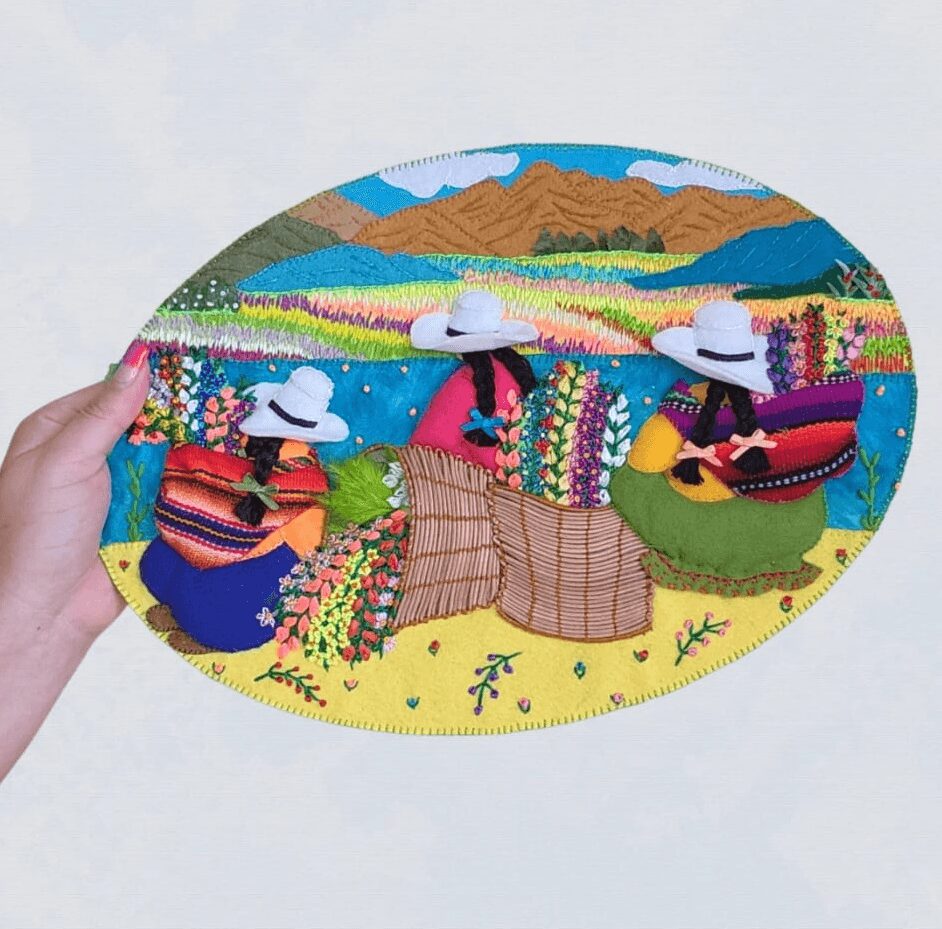

Today we’d like to introduce you to Esther Merino
Hi Esther, so excited to have you on the platform. So before we get into questions about your work-life, maybe you can bring our readers up to speed on your story and how you got to where you are today?
At 80 years old, Esther Merino is a skilled Peruvian artist specializing in *arpillería* (textile art). Each unique piece reflects the traditions and culture of her ancestors, bringing a touch of Latin America to your living spaces.
Though she practiced textile art as a hobby for over 40 years, it wasn’t until the COVID-19 pandemic in 2020 that she began selling her work and applying to art shows. When Peru closed its borders and unable to go back to her country, she made a new home in Utah. Through her art, she stays connected to her Indigenous and Afro-Peruvian roots, sharing a piece of Peru with the United States. Welcomed by the Utah art community, she has discovered the true value of her ideas and skills.
Would you say it’s been a smooth road, and if not what are some of the biggest challenges you’ve faced along the way?
Like any creative journey, Esther’s path has had its ups and downs. In Peru, the haggle culture often undervalues artists’ work, making it difficult to sell at fair prices. Because of this, she never considered selling her arpilleras, let alone displaying them in galleries or museums—they were always special gifts for family.
That changed in 2020 when she nervously participated in her first farmer’s market, unsure if anyone would buy her art. To her surprise, she sold 10 pieces. This moment sparked a newfound confidence and inspiration, motivating her to share her culture with a wider audience. She began applying to art shows and attending more markets, finding joy in connecting with the Utah community through her work.
Appreciate you sharing that. What else should we know about what you do?
I find immense joy in creating with my hands. It gives me a sense of purpose and a deep connection to God.
My inspiration comes from the vibrant festivals, traditional garments, and intricate patterns of the Andes. While I don’t follow traditional Arpillera techniques, I stay connected to my roots by depicting everyday life and the beauty of simplicity.
My process begins with gathering references, mainly photos, often inspired by my idealized vision of rural life. I sketch my ideas in layers, starting with the background and adding elements on top. I use tracing paper to visualize the composition, a process that takes a few days and includes feedback on my drafts.
Once the design is finalized, I create templates for each element, cut the fabric, and begin layering and embroidering the scene. The finishing touches depend on the base—if mounted on wood, I use fine embroidery; if framed, I leave a small border to secure the piece. Throughout the process, I document progress with photos and adjust based on feedback.
What sets me apart from other *arpillería* artists is my departure from traditional techniques by incorporating perspective into my pieces. I prefer a balanced composition rather than an overcrowded one. Unlike traditional methods that focus solely on layering everyday moments, I emphasize layering landscapes first and then adding subjects that complete the story.
What quality or characteristic do you feel is most important to your success?
Resilience and openness to new opportunities have been key to my success. Initially, I never imagined selling my work or showcasing it in galleries, but stepping outside my comfort zone changed everything. Embracing feedback, adapting to new markets, and staying true to my cultural roots have allowed me to grow as an artist and connect with a wider audience.
Contact Info:
- Instagram: https://www.instagram.com/peruviancraftsstudio/
- Other: https://www.etsy.com/shop/PeruvianCraftsStudio?fbclid=PAZXh0bgNhZW0CMTEAAaY9CFJz3Xj9nBhB0BvcavAkF94-Bc2jVGiIdrnzIYlX2SDS8jJudbYzpPo_aem_N7nHIiQkINb2iwArA5khow



















